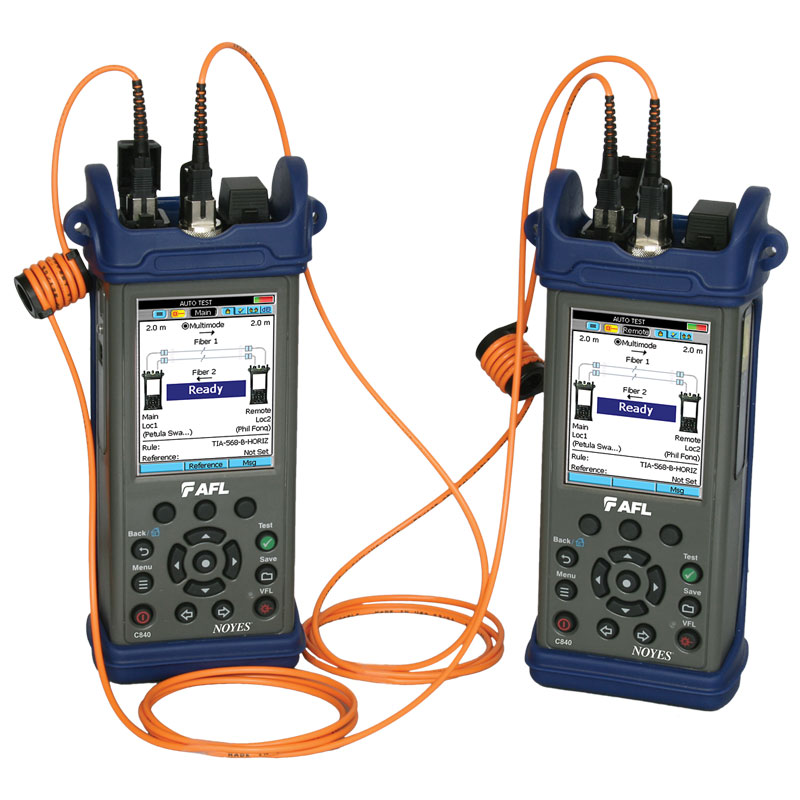Investing in optical fibre testing equipment improves network performance.
Exploring the Conveniences of Optical Fibre Evaluating for Enhanced Communication Equipments
The relevance of optical fiber screening in contemporary interaction systems can not be overstated, as it offers as a structure for ensuring network integrity and efficiency. This proactive screening technique has profound implications for signal quality and operational performance, raising the concern of how these practices add to lasting sustainability in an ever-evolving technological landscape.
Importance of Optical Fibre Screening
The value of optical fibre screening can not be overstated in today's data-driven atmosphere. As companies increasingly depend on high-speed data transmission for day-to-day procedures, the integrity and efficiency of optical fiber networks are paramount. Testing makes certain that these networks can sustain the vast quantities of data generated and transferred seamlessly, cultivating efficient communication and connectivity.
Optical fibre testing offers several vital functions, including confirming installation quality, determining potential mistakes, and identifying total system performance. Routine screening can avoid pricey downtimes and service interruptions, allowing companies to preserve functional connection. In addition, it assists in conformity with sector standards and regulations, ensuring that fiber optic installments satisfy required specifications for security and integrity.
In addition, screening can enhance the longevity of fibre optic systems. By proactively recognizing concerns such as signal loss, depletion, or connector failings, organizations can resolve troubles prior to they escalate, thus prolonging the life of their framework. In summary, optical fiber screening is not simply a technical requirement however a calculated investment that boosts network integrity, enhances performance, and ultimately supports the growth and performance of modern interaction systems.
Trick Evaluating Techniques

OTDR is an important strategy used to identify faults, procedure splice losses, and assess the general stability of a fiber optic web link. By sending out a pulse of light down the fiber and assessing the reflected light, technicians can identify places of faults and review the network's performance over fars away.
Insertion loss screening determines the quantity of signal loss that happens when light travel through a connection or splice. This method is important for confirming that links fulfill specific loss limits, which is vital for keeping ideal efficiency in communication systems.
Optical return loss testing quantifies the quantity of light mirrored back towards the resource due to flaws in the fiber or connections. a knockout post High return loss values indicate better efficiency and minimized signal deterioration.
Together, these screening techniques provide an extensive evaluation of fibre optic networks, ensuring their dependability and performance in varied communication applications.
Effect On System Performance
Reliable optical fibre screening straight influences the overall performance of communication systems. By guaranteeing the stability of fibre optic cable televisions, testing recognizes prospective mistakes such as attenuation, splice loss, and port imbalance. These concerns can considerably deteriorate signal high quality, resulting in disruptions and reduced data transmission speeds.

Moreover, routine optical fiber screening adds to long-term system sustainability. It enables very early detection of wear and tear, permitting prompt upkeep and upgrades before significant failings take place. This not just extends the life expectancy of the infrastructure however likewise guarantees that communication systems stay affordable in regards to performance.
Cost-Effectiveness and Effectiveness
Cost-effectiveness is a critical factor to consider in the implementation and maintenance of optical fiber networks. Applying durable optical fiber testing treatments can significantly decrease functional prices by recognizing problems prior to they directory rise into major issues. robotic vision. By finding mistakes, depletion, and various other performance hindrances early, organizations can avoid expensive repair work and downtime, which can disrupt solutions and cause profits loss
Furthermore, efficient testing techniques improve the setup process, permitting service technicians to work much more efficiently. This translates to decrease work costs and faster task conclusion times. Advanced testing devices, such as Optical Time Domain Reflectometers (OTDRs), enables a precise assessment of fibre high quality, making certain that only optimal materials are made use of, thus lessening waste.
Regular screening additionally adds to far better resource appropriation. By recognizing the network's efficiency, companies can make educated decisions regarding upgrades and developments, ensuring that investments are made where they are most needed. In summary, optical fibre testing improves cost-effectiveness and effectiveness, supporting the lasting sustainability and competition of interaction systems in a progressively requiring market.
Making Certain Long-Term Reliability
Executing extensive optical fiber screening not Recommended Reading only enhances cost savings and functional efficiency yet additionally plays a crucial function in guaranteeing the lasting dependability of interaction networks. Constant testing techniques, consisting of attenuation and bandwidth analyses, assistance determine potential degradation in fiber performance prior to it results in service interruptions.
By utilizing sophisticated screening approaches, network drivers can identify faults or weak points in the fiber infrastructure, enabling prompt remediation. This aggressive approach minimizes downtime, making sure that interaction systems remain functional and reliable. Regular testing adds to the development of a more resistant network, as operators can adapt and enhance their facilities based on real-time data insights.
Additionally, guaranteeing conformity with market requirements via optical fibre testing strengthens the quality and honesty of the whole communication system. This adherence not only boosts confidence amongst stakeholders yet also aligns with governing needs, which are progressively rigid.
Verdict
To conclude, optical fiber screening serves as an essential part in enhancing communication systems. By using various screening approaches, such as OTDR and insertion loss assessments, networks can accomplish ideal efficiency and integrity. The aggressive identification of mistakes not only improves signal top quality but additionally minimizes downtime, eventually adding to cost-effectiveness and operational efficiency. Furthermore, adherence to sector standards fosters stakeholder self-confidence, making certain the lasting sustainability of communication frameworks in an increasingly data-driven landscape.